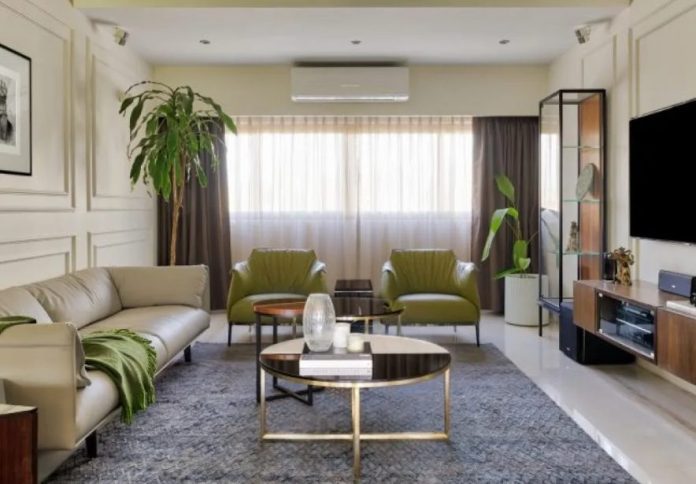Arranging living room furniture can be a daunting task, especially if you’re not sure where to start. Here are some tips to help you create a functional and aesthetically pleasing layout for your living room:
1. Measure your space:
Before you start moving furniture around, it’s important to measure your living room and create a floor plan. Measure the dimensions of the room and the size of your furniture, and use a scale drawing or online floor plan tool to plan out the layout. This will help you visualize how the furniture will fit in the room and make it easier to arrange.
2. Consider the traffic flow:
Think about how you and your family use the living room, and arrange the furniture in a way that allows for easy movement through the room. Leave enough space for people to walk around and between pieces of furniture, and try to create a clear pathway from one end of the room to the other.
3. Start with the largest pieces first:
Begin by placing the largest pieces of furniture in the room, such as the sofa, chairs, and any other large pieces. These should be placed against the walls, with enough space around them to allow for easy movement.
4. Create a focal point:
Next, choose a focal point for the room, such as a fireplace, a window with a beautiful view, or an entertainment center. Arrange your furniture around the focal point, facing it so that the furniture is oriented towards the center of the room.
5. Use rugs to define spaces:
If your living room is open-plan, or if you have multiple seating areas in the room, use rugs to define the different spaces. A rug can help to anchor a seating area and create a sense of separation between different zones in the room.
6. Add smaller pieces of furniture:
Once you have the larger pieces of furniture in place, you can add smaller pieces such as side tables, ottomans, and coffee tables. These should be placed in a way that complements the larger pieces and doesn’t obstruct traffic flow.
Create balance: When arranging your furniture, aim for balance by placing heavier pieces on either side of the room, and lighter pieces in the center. This will create a sense of equilibrium and make the room feel more cohesive.
7. Use furniture to create intimacy:
If you have a large living room, you can use furniture to create a sense of intimacy and define different areas within the space. For example, you might use a couch and chairs to create a cozy seating area, or place a bookshelf or room divider to create a sense of separation.
8. Experiment with different layouts:
Don’t be afraid to experiment with different layouts and rearrange the furniture until you find a layout that works for you. You might need to try a few different arrangements before you find the one that feels right.
9. Add some accessories:
Finally, add some accessories to your living room to give it character and make it feel more homely.
There are many different types of accessories that you can add to your living room to give it character and make it feel more homely. Some ideas include:
- Throw pillows: These are a great way to add some color and texture to your living room. You can choose pillows in a variety of sizes and shapes, and in a range of colors and patterns to match your decor.
- Blankets: A cozy blanket can add warmth and comfort to your living room, and can be a great accessory for snuggling up on the couch on a cold winter’s night.
- Artwork: Hang some artwork on your walls to add interest and personality to your living room. You can choose paintings, prints, or other types of wall decor to match your style.
- Plants: Adding some greenery to your living room can bring life and energy to the space. Choose plants that are easy to care for and that thrive in the conditions of your living room.
- Rugs: A rug can add warmth and comfort to your living room, and can also help to define the space and create a cohesive look. Choose a rug that is the right size for your room and that complements your other decor.
- Candles or diffusers: Adding some scented candles or diffusers can help to create a relaxing
Summary
Arranging furniture in your living room involves considering the traffic flow, choosing a focal point, using rugs to define spaces, adding smaller pieces of furniture, creating balance, using furniture to create intimacy, and experimenting with different layouts. By following these tips and using your creativity, you can create a functional and aesthetically pleasing layout for your living room.
Apart from that, if you are interested to know about 5 lighting mistakes we all make when it comes to living room decor then visit our Home improvement category.











